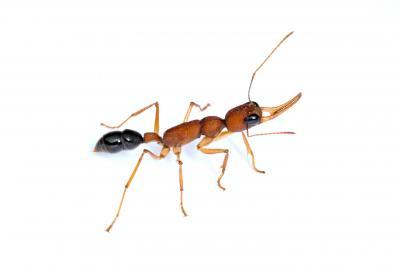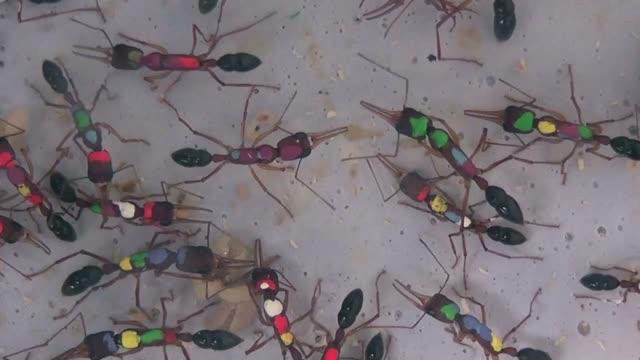Gamergates look like ordinary workers but inside things are changing: their brains shrink by 25 percent, their ovaries expand to fill their abdomens and their life expectancy jumps from months to years.
Why? Researchers wanted to find out.
So they took some workers from a colony and separated them from their gamergates. These workers effectively formed their own colony and began fighting to establish dominance.
When some of the workers in the new colony (Colony B) began to get the upper hand, they were removed. They found that these dominant ants had begun to produce elevated levels of dopamine – more than other workers, though less than full-fledged gamergates.
They then placed these dominant workers back into their original colony (Colony A). The regular Colony A workers recognized the changes in the dominant workers and exhibited "policing" behavior, holding down the dominant ants so that they couldn't move.
Within 24 hours, the dopamine levels in the dominant workers had dropped back to normal; they were just regular worker ants again.

The Indian jumping ant (Harpegnathos saltator) is a model organism for epigenetics researchers because it can undergo significant changes in physiology without any related changes to its DNA. Instead, the physiological changes depend on which genes are turned on or off -- which in turn is determined by social and environmental factors. Credit: Clint Penick
"We wanted to know what's responsible for these physical changes," says Dr. Clint Penick, lead author of a paper describing the work and a postdoctoral researcher at NC State. "The answer appears to be dopamine. We found that gamergates have dopamine levels two to three times higher than other workers."
"This tells us that the very act of winning these ritual battles increases dopamine levels in H. saltator, which ultimately leads to the physical changes we see in gamergates," Penick says. "Similarly, losing these fights pushes dopamine levels down."

When an H. saltator colony's queen dies, the female workers engage in ritual fights to establish dominance. Ultimately, a small group of workers establishes dominance and become a cadre of worker queens or "gamergates." The gamergates look like ordinary workers, but undergo extreme internal changes: their brains shrink by 25 percent; their ovaries expand to fill their abdomens; and their life expectancy jumps from about six months to several years or more. Credit: Clint Penick
The findings may offer insight into the behavior of a range of social insect species, Penick says. "Policing behavior occurs in wasps and other ant species, and this study shows just how that behavior can regulate hormone levels to affect physiology and ensure that workers don't reproduce," he explains.




Comments